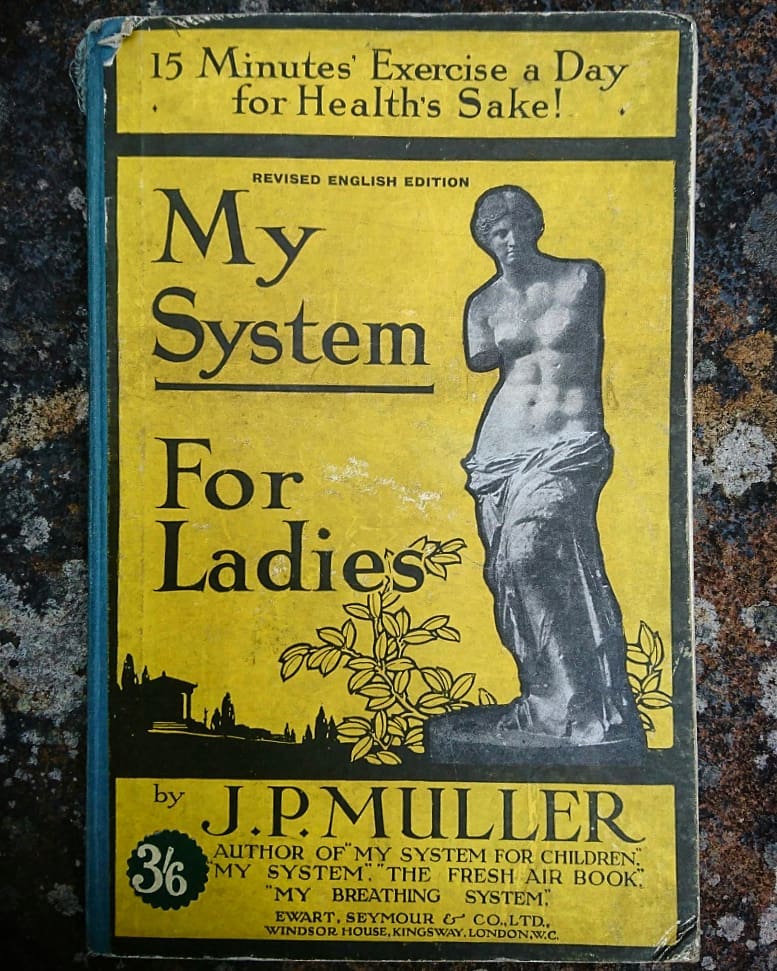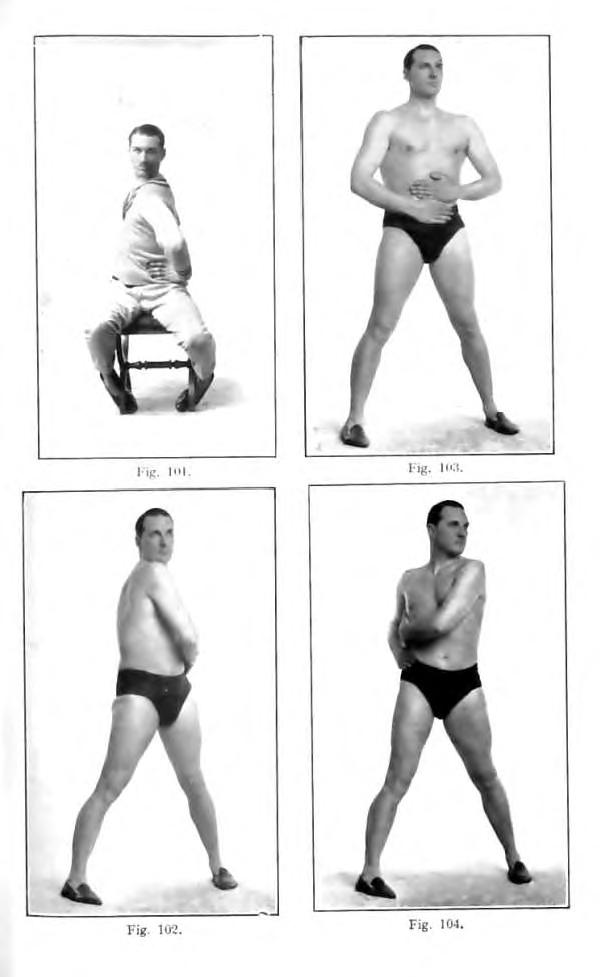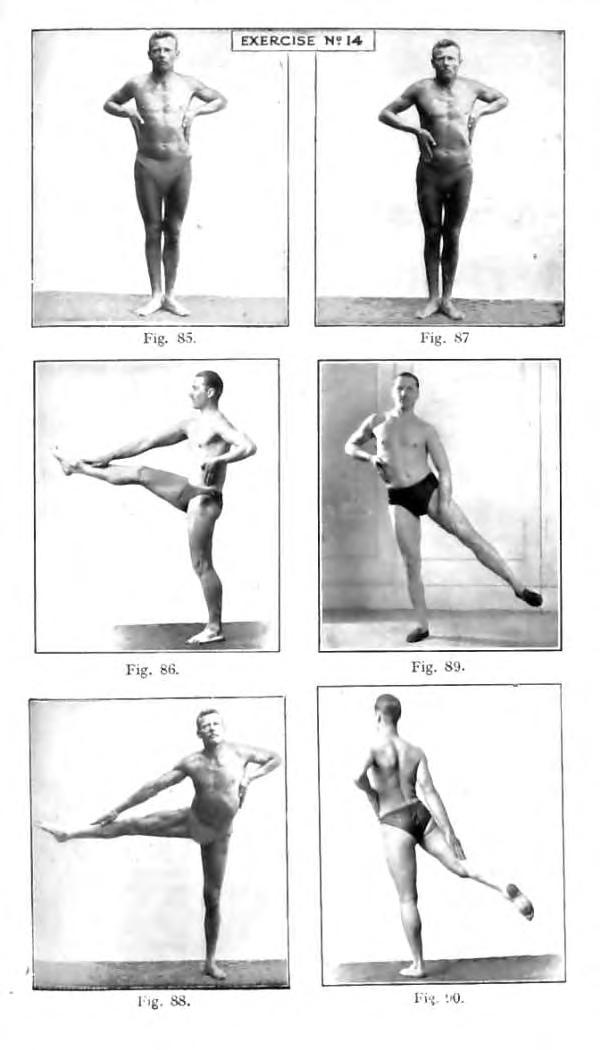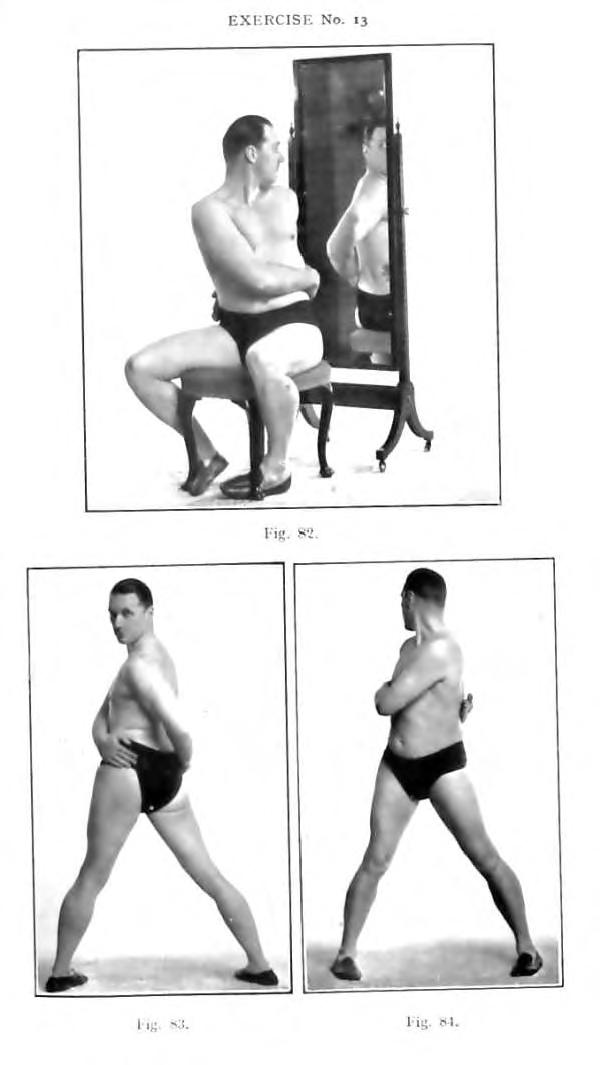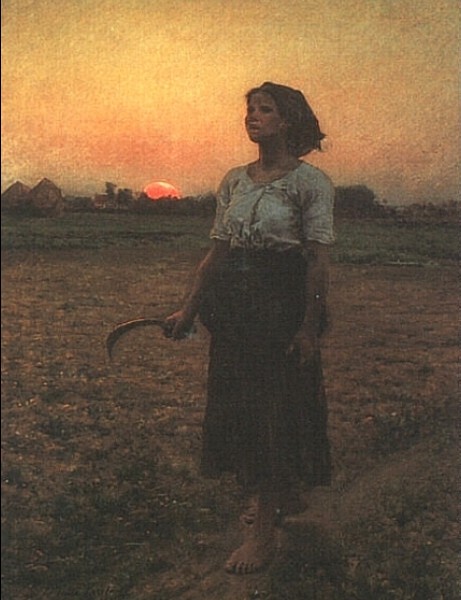[Most Recent Entries] [Calendar View]
Monday, March 11th, 2019
| Time | Event |
| 4:34a | The Big Pond: Stream 50 Audio Stories from the Goethe-Institut, Available Free Online
Who doesn’t love a good podcast? Don’t tell me you’ve never binged Serial or laughed out loud with Marc Maron. Over the last few years, podcasts have become a cultural phenomenon–they help us endure our daily commutes and then lull us back to sleep at night. Listening culture isn’t new, though–talk radio has been filling the silence with anecdotes, news, and drama since the early 1900s. The Goethe-Institut’s new radio and podcast series THE BIG POND. A US-German Listening Series is a perfect marriage of these two audible storytelling formats. The Goethe-Institut, a German cultural center with its North American headquarters in Washington, has partnered with the Public Radio Exchange (PRX), the RIAS Berlin Kommission, KCRW Berlin, and other public radio stations and producers in Germany and the US to bring you THE BIG POND, a collection of 50 unique audio pieces released on a weekly basis. From pretzels and beer to the Berlin Wall, from motorcycles to recycling, THE BIG POND offers a fresh perspective on just how much these two countries share while celebrating podcasting, broadcasting, and “Wunderbar Together” – the German-American Year of Friendship. Don’t worry, the radio features are all in English! Episodes are available for free via PRX, iTunes, Spotify, and THE BIG POND’s website as podcasts and for broadcast by public radio stations in the United States. This carefully curated library of audio productions covers all things German-American: German motorcycle tourists in Utah, a young German journalist’s mythical day with John Lennon, German-style apprenticeships in the US, an American opera singer’s life in Berlin, New York City beer gardens, and much more. THE BIG POND is home to features from up-and-coming producers as well as industry greats like Katie Davis, a contributor to NPR’s “All Things Considered” and “This American Life”, and the Kitchen Sisters (Davia Nelson and Nikki Silva), producers of the award-winning NPR series “Hidden Kitchens”. "When an editor asks me to do a radio story, it usually comes with lots of directions,” said radio producer Katie Davis. “When the team at THE BIG POND talked to me about a story for this series, everything was wide open. No rules, requirements; just a wide open canvas with space for original stories.” Provided with the necessary freedom to tell their transatlantic tales, THE BIG POND producers have developed pieces that resonate with audiences of all backgrounds on both sides of the big pond, conveying a balanced and modern image of Germany and the US. THE BIG POND isn’t a collection of puff pieces about Germany–it’s a well-researched narrative of German and American life and culture. Close cooperation with German and American journalists gives an authentic voice to Germany, the US, and their many subcultures while building up the transatlantic radio network. Anyone interested in the series can download episodes free of charge for individual use or broadcasting at PRX, iTunes, Spotify, or by visiting THE BIG POND’s website. Check www.goethe.de/bigpond and the Goethe-Institut Washington’s social media channels for transcripts and behind-the-scenes content. For the project’s press release and other press materials, please visit: Savannah Beck is the Online Editor at the Goethe-Institut Washington. The Big Pond: Stream 50 Audio Stories from the Goethe-Institut, Available Free Online is a post from: Open Culture. Follow us on Facebook, Twitter, and Google Plus, or get our Daily Email. And don't miss our big collections of Free Online Courses, Free Online Movies, Free eBooks, Free Audio Books, Free Foreign Language Lessons, and MOOCs. |
| 8:00a | Alan Watts Presents a 15-Minute Guided Meditation: A Time-Tested Way to Stop Thinking About Thinking The concept of emptiness—sh?nyat?—in Mahayana Buddhism is perhaps a subject best avoided in casual conversation. It so vexes everyone not least because of issues of translation: "emptiness," many scholars think, hardly suffices as a substitute. In English it has a more distinctly nihilist flavor than was intended. Yet emptiness is so indispensable that it can hardly go unmentioned when the practice and purpose of meditation come up in Buddhist thought. Leave it to Zen to put things in such succinct and down-to-earth ways: the practice of meditation is to develop “’no mind,’” says Suzuki Roshi. It is to have “no gaining idea.” The reason is to have no reason. But from the same point of view, there is a point: “the point we should make clear in our practice,” the Zen master tells us: we should "put more emphasis on big mind rather than small mind.” If you need more clarification, you might turn to another Zen popularizer who also began to draw audiences in California in the 50s: Alan Watts. Watts came to San Francisco not with a lifetime of monastic training in Japan, but through his training as an academic, Episcopal priest, and Zen enthusiast in Britain. He is wordier, less poetic, and more essayistic in his delivery, but in discussing the purpose of meditation, you will find him saying the very same things as the Zen masters:
As for Suzuki's “big mind," Watts has his own version: “The art of meditation is a way of getting into touch with reality… our basic inseparability from the whole universe.” These are not necessarily synonyms for “emptiness,” but the idea of having no idea maybe comes close to summarizing the concept. “Not knowing,” as the koan says, “is most intimate.” Maybe it’s hair-splitting and belabors the comparison, but Suzuki Roshi did not talk about meditation as a way to stop all thinking. This is futile, he would argue. Watts seems to suggest otherwise when he says that “we become interiorally silent and cease from the interminable chatter that goes on inside our skulls. Because you see, most of us think compulsively all the time." Most honest people will tell you they think compulsively during meditation as well. But in his guided meditation above, Watts acknowledges just this fact. Indeed, his matter-of-fact way of recognizing the ever-presence of thought is what makes the instructions he gives so useful, even if they are also, ultimately, pointless. Hear the original fifteen minute guided meditation at the top of the post and an edit, with some, maybe distracting, background music, just above. To let thinking recede into the background, we must engage our other senses, letting every sound and sensation come and go and the autonomous nervous system take over. How to let go of thinking about thinking? Let Watts guide you in an exercise and see what happens. Then listen to Suzuki Roshi describe the Buddhist philosophy of emptiness. As far as meditation, or "zazen practice," goes, he says, our zazen practice is based on... the teaching of sh?nyat? or emptiness," which is not an idea but an experience of "letting go of fixed ideas," writes another Zen master who brought his practice to the U.S., "in order to go beyond them." Related Content: Alan Watts Dispenses Wit & Wisdom on the Meaning of Life in Three Animated Videos How Meditation Can Change Your Brain: The Neuroscience of Buddhist Practice Stream 18 Hours of Free Guided Meditations Josh Jones is a writer and musician based in Durham, NC. Follow him at @jdmagness Alan Watts Presents a 15-Minute Guided Meditation: A Time-Tested Way to Stop Thinking About Thinking is a post from: Open Culture. Follow us on Facebook, Twitter, and Google Plus, or get our Daily Email. And don't miss our big collections of Free Online Courses, Free Online Movies, Free eBooks, Free Audio Books, Free Foreign Language Lessons, and MOOCs. |
| 11:00a | The Amazing Franz Kafka Workout!: Discover the 15-Minute Exercise Routine That Swept the World in 1904 Does your spare tire show no signs of deflating as bikini season looms? Is the fear of bullies kicking sand in your face beginning to outstrip the horror of transforming into a giant bug overnight? Do you long to experience lasting health benefits along with an impressively fit appearance? Friends, we make you this promise: The Amazing Franz Kafka Workout will transform your life along with your physique in just 15 minutes a day. That's right, just 15 minutes of daily calisthenics (and some common sense practices with regard to diet, sleep, and hygiene) is all it takes. Even pencil-necked authors walking around with their backs bowed, their shoulders drooping, their hands and arms all over the place, afraid of mirrors because they show an inescapable ugliness, can discover the confidence that eludes them, through improved posture, breathing, and muscle tone. (Note: the Amazing Franz Kafka Workout will not protect you from the pernicious, eventually fatal effects of tuberculosis.) The Amazing Franz Kafka Workout is more correctly attributed to fitness guru Jørgen Peter Müller, above, the author of several exercise regimen pamphlets, including the bestselling My System: 15 Minutes' Exercise a Day for Health's Sake, which was published in 1904 and then translated into 25 languages. Kafka was definitely the best known of Müller’s devotees, scrupulously running through the prescribed exercises morning and evening, wearing nothing more than the skin he was born in—another practice Müller heartily endorsed. The chiseled Mr. Müller was a proponent of regular dental check ups, sensible footwear, and vigorous toweling (or "rubbing"), and an enemy of constrictive woolen underwear, closed windows, and sedentary lifestyles. My System includes some observations that wouldn’t sound out of place in a Kafka novel: The town office type is often a sad phenomenon prematurely bent, with shoulders and hips awry from his dislocating position on the office stool, pale, with pimply face and pomatumed head, thin neck protruding from a collar that an ordinary man could use as a cuff, and swaggering dress in the latest fashion flapping round the sticks that take the place of arms and legs! At a more advanced age the spectacle is still more pitiable… the eyes are dull, and the general appearance is either still more sunken and shriveled or else fat, flabby, and pallid, and enveloped in an odour of old paper, putrified skin grease, and bad breath. In an essay on Slate, Sarah Wildman, the descendent of two lean Müller fans, delves into the Müller System’s popularity, particularly amongst 20th-century European Jews.
Just as best-selling fitness experts do today, Müller beefed up his franchise with related titles: My System for Ladies, My System for Children, and My Sunbathing and Fresh Air System. The original book is in the public domain and can be downloaded for free from the Internet Archive, where one commenter who has been following the system for nearly seventy years gives it a hearty thumbs-up for its stamina restoring powers. Others seeking to make a buck by charging for Kindle downloads have the decency to offer free instructions for each of the individual exercises, including Quick Sideways Bending of Trunk (with Rubbing) and the plank-y Bending and Stretching of the Arms, partly Loaded with the Weight of the Body. Even those unlikely to perform so much as a single deep knee bend should get a bang out of the original photo illustrations, which, back in 1904, were as ripe for erotic double duty as the wholesome men’s physique mags of the 50s and 60s. Insert speculation as to Kafka's sexual orientation here, if you must.
Related Content: 77 Exercises: A Workout Video For Fans of the Talking Heads What’s a Scientifically-Proven Way to Improve Your Ability to Learn? Get Out and Exercise Ayun Halliday is an author, illustrator, theater maker and Chief Primatologist of the East Village Inky zine. Join her in New York City tonight, March 11, for the next installment of her ongoing book-based variety show, Necromancers of the Public Domain. Follow her @AyunHalliday. The Amazing Franz Kafka Workout!: Discover the 15-Minute Exercise Routine That Swept the World in 1904 is a post from: Open Culture. Follow us on Facebook, Twitter, and Google Plus, or get our Daily Email. And don't miss our big collections of Free Online Courses, Free Online Movies, Free eBooks, Free Audio Books, Free Foreign Language Lessons, and MOOCs. |
| 2:00p | Bill Murray Explains How a 19th-Century Painting Saved His Life You don't understand prewar 20th-century America unless you understand a particular 19th-century French painting: Jules Breton's The Song of the Lark. "In this evocative work, a young peasant woman stands silently in the flat fields of the artist's native Normandy as the sun rises, listening to the song of a distant lark," says a post from the Art Institute of Chicago. Apart from being selected as America's favorite painting in 1934, it was also Eleanor Roosevelt's favorite work of art, it provided the title for Willa Cather's third novel, and it "inspired Bill Murray while he was struggling as an actor in Chicago." In the video above, a clip from a press conference on the Murray-featuring historical art-heist film The Monuments Men, he tells the story of how The Song of the Lark saved him. "This may be a little bit not-completely-true," Murray says, "but it's pretty true." When he first started acting on the stage in his hometown of Chicago, he didn't quite have the skills that have made him such a compelling presence for more than forty years on the screen. After what sounds like one particularly poor early performance — poor enough to make him consider his life practically over — he took a despairing walk toward Lake Michigan, thinking, "If I'm going to die where I am, I may as well go over to the lake and float for a while after I'm dead."
But then a sudden, impulsive turn up Michigan Avenue took Murray to the Art Institute of Chicago, and there he found himself in front of The Song of the Lark, which has now hung there for over a century. The sight of it got him thinking: "'Well, there's a girl who doesn't have a whole lot of prospects, but the sun's coming up anyway and she's got another chance at it.' So I think that gave me some sort of feeling that I, too, am a person, and I get another chance every day the sun comes up." Many of the Great Depression-era Americans who admired Breton's painting must have drawn similar feelings from it, just as surely as many of Murray's fans have found inspiration in all his characters, artfully crafted between the comedic and the dramatic — characters that, without The Song of the Lark, he may never have lived to perform. Related Content: The Art Institute of Chicago Puts 44,000+ Works of Art Online: View Them in High Resolution The Philosophy of Bill Murray: The Intellectual Foundations of His Comedic Persona Listen to Bill Murray Lead a Guided Mediation on How It Feels to Be Bill Murray Art Exhibit on Bill Murray Opens in the UK Based in Seoul, Colin Marshall writes and broadcasts on cities, language, and culture. His projects include the book The Stateless City: a Walk through 21st-Century Los Angeles and the video series The City in Cinema. Follow him on Twitter at @colinmarshall or on Facebook. Bill Murray Explains How a 19th-Century Painting Saved His Life is a post from: Open Culture. Follow us on Facebook, Twitter, and Google Plus, or get our Daily Email. And don't miss our big collections of Free Online Courses, Free Online Movies, Free eBooks, Free Audio Books, Free Foreign Language Lessons, and MOOCs. |
| << Previous Day |
2019/03/11 [Calendar] |
Next Day >> |




